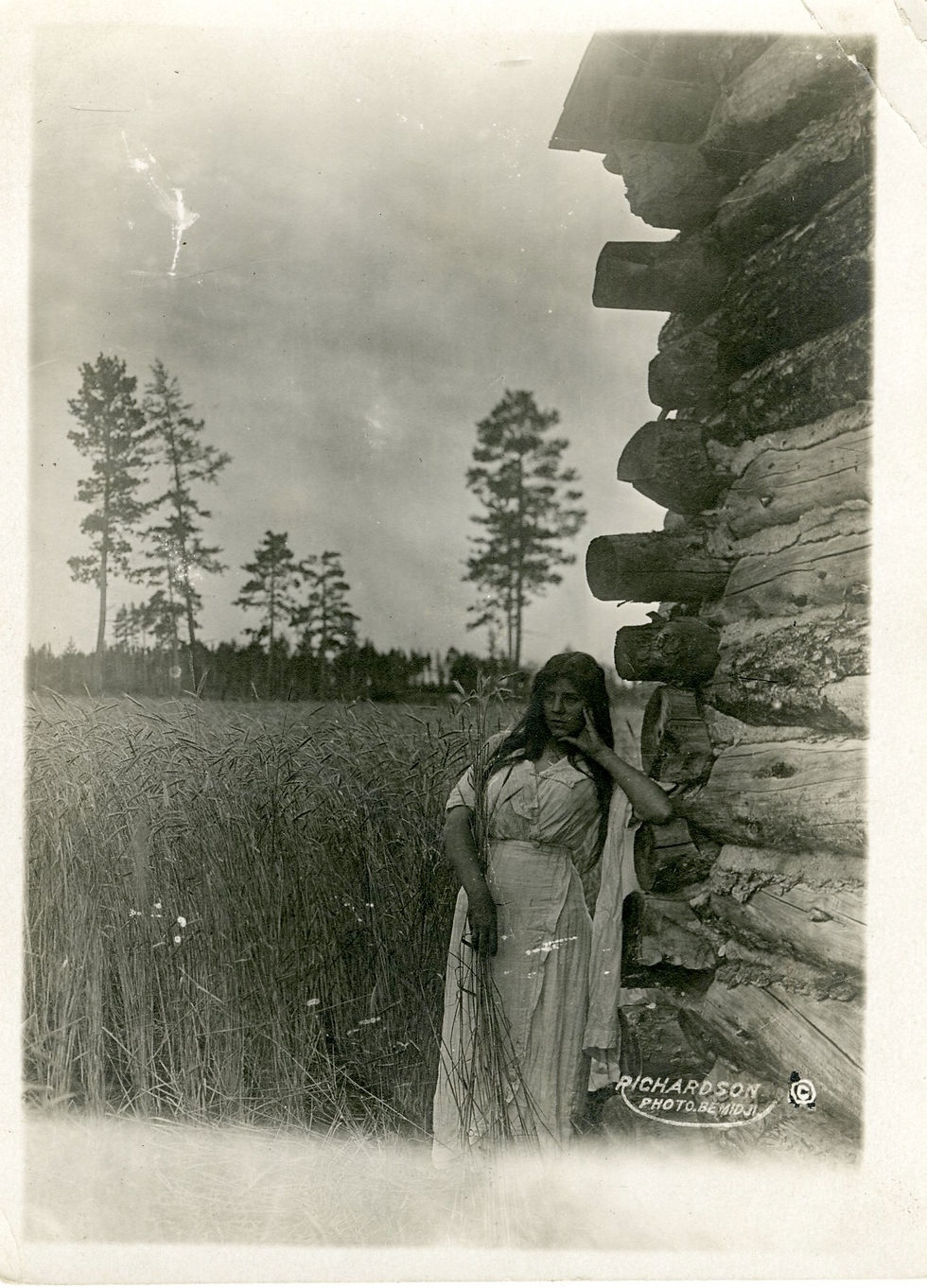Unknown woman
- Emily Thabes
- Mar 8, 2023
- 3 min read

Today is International Women's Day! Starting in 1911, International Women's Day (IWD) is a global day celebrating the social, economic, cultural, and political achievements of women. The day also marks a call to action for accelerating gender parity. Significant activity is witnessed worldwide as groups come together to celebrate women's achievements or rally for women's equality.
Beltrami County Historical Society is celebrating the women of Beltrami County all month long in partnership with United Way of Bemidji Area and Paul Bunyan Broadcasting. Check out local broadcasts and the Living United podcast to learn about the many fabulous women who have shaped our local history; several biographies will be featured throughout March.

This blog post, however, honors no one by name. instead, we're profiling the "Unknown Woman." Throughout our archives, we have hundreds of images that include women but do not document their names. Unknown Woman appears in photographs alone, with (presumably her) children, other unknown women, and, perhaps most vexingly, with men whose names are typically included on or in the image. Neither the decade in which the image was taken nor the decade in which the woman was born are factors in becoming an Unknown. We have Unknown Women from all over Beltrami County, across all periods for which archives are collected at the Historical Society.

Unfortunately, the Unknown Woman is not a phenomenon unique to Beltrami County. Museums and historical societies worldwide struggle with missing context for artifacts and images in an attempt to make meaning of community history. The lack of information about women is especially challenging: without information, the steps to erasing women from community contributions are short and swift. This is evident nationally: in 2019, the Smithsonian reported that only one woman for every three men is included in history curriculum standards at K-12 public institutions. The lack of inclusion of black, Native American, and Asian American women is even more egregious.

Of course, the invisibility of women is not limited to a lack of historical documentation. According to UN Women, 10 to 39 percent of the Gross Domestic Product is attributed to unpaid care and domestic work. Women carry out at least two and a half times the amount of unpaid labor as men. Despite visual documentation of women cooking, cleaning, caring for children and the elderly, and contributing additional labor, the work is infrequently recognized, celebrated, or even documented beyond a photo.

The impacts of gender inequality extend far beyond women's economic contributions to society. The majority of the world's hungry are women and children. Less than 20% of the world's landowners are women. Women make up more than two-thirds of the world's illiterate persons. Gender gaps exist in education, decision-making, healthcare - in nearly every area in which the quality of life of a person could be reasonably compared to that of another.
So, Invisible Woman, thank you. Thank you for caring for our elders and our children and husbands and wives and one another. Thank you for cleaning and caring for our homes and businesses and churches and libraries. Thank you for being teachers and artists and metalworkers and plumbers and delivery workers and officers. Thank you for taking second, third, and fourth jobs to provide enough income to provide for your first job, your family. Thank you for your contributions to the history and future of our community. We promise to do our best to recognize and honor you and continue to build our archives and knowledge to make you Invisible No More. -ET




link link link link link link link link link link link link link link link link link link link link link link link link link link link link link link link link link link link link link link link link link link link link link link link link link link link link link link link link link link link link link link link link link link link link link link link link link link link link link link link link link link link link link link link link link link link link link link link link link link link link
Own the ranch in the Yellowstone Vest – Perfect for layering in style. Discover The Western Apparel for versatile designs.
Get the ultimate retro look with the Jacket 8 Ball and 8 Ball Leather Jacket. Perfect for a bold statement!
Stay fashionable with the Leather Biker Jacket Mens Fashion from Biker Jackets. Perfect for a sleek and edgy look. Shop now.